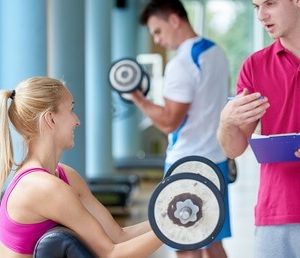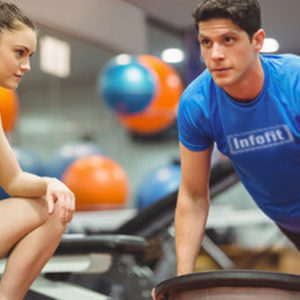Iron Deficiency: Athletes May be at a Higher Risk
Disclaimer: this article is not medical advice. If you suspect that you are suffering from an iron deficiency, please speak to your healthcare provider or practitioner.
There are countless benefits to exercising regularly. Better sleep, better energy, improved mental health, increased longevity–the list goes on and on. But it’s possible that one of the very, very few risks to an active lifestyle is iron deficiency (and anaemia). Especially if you’re an endurance athlete and especially if you’re a woman.
Iron Deficiency is one of the most common mineral deficiencies, with – of the population afflicted. It has many symptoms, some of which may be affecting you!
Are you:
- Deeply fatigued, both mentally and physically, no matter how much rest you get?
- Weak and unable to catch your breath, even during activities that should be easy for you?
- Having a difficult time recovering from exercise?
- Easily–and frequently–bruised?
- Feeling a tightness in your chest, or experiencing heart palpitations?
- Tired, but having a hard time getting to sleep?
- Lightheaded and dizzy?
- Paler than usual?
- Cold all the time, especially in your hands and feet?
Some other fun symptoms of Iron Deficiency include a suppressed immune system, recurring headaches, brittle hair and nails, and swelling and soreness of your tongue.
In this article, we’ll discuss Iron Deficiency and Iron Deficiency Anaemia, the difference between the two conditions, symptoms, and treatment–and why, as an athlete, you may be more at risk. And as a bonus, we’ll talk about Pseudo-anaemia, a condition in which your body thinks it’s iron deficient–but maybe isn’t?
Iron Deficiency
This will probably come as no surprise, but Iron Deficiency happens as a result of there not being enough iron in the body to sustain optimum health. Iron is needed to make a protein called haemoglobin, which carries oxygen around the body to be used in most cells. Iron Deficiency in itself is typically not a cause for alarm–with some small dietary changes, most cases can be resolved. If your iron deficiency is more severe, however, your doctor may diagnose you with Iron Deficiency Anaemia.
Iron Deficiency Anaemia
If iron deficiency is left untreated, or if it is exacerbated, it may develop into Iron Deficiency Anaemia, which is a condition in which blood lacks adequate healthy red blood cells (Mayoclinic).
Why are Athletes at a Higher Risk?
Athletes are at a greater risk of iron deficiency because, in short, exercise requires a lot of iron! During exercise, an increased breathing rate indicates that your muscles are demanding more oxygen and that iron is working overtime. Also, in the mitochondria of your cells, there is a very important metabolic system in which iron plays an essential role and which is highly active during exercise. Also, there is some evidence that high-impact activities, such as running, can actually crush a small amount of red blood cells, leading to a greater iron demand in the body.
Unfortunately, if you menstruate, on top of being physically active, you are at a much greater risk of iron deficiency, simply due to the fact that you lose blood every month.
Pseudo Anaemia
Now, a complicating factor: Pseudo Anaemia! If you got your iron levels tested after an intense bout of exercise, it’s possible that your iron levels will appear to be lower than they actually are. How so? Well, after exercising, plasma levels are often elevated, leading to a ‘dilutional’ effect on red blood cells. So, while you may actually have a healthy amount of iron in your blood, it may appear depleted on a test. To prevent skewed results, make sure to wait at least a day after exercising to get your iron tested.
An Iron-Rich Diet
If you’ve discovered that you are iron deficient, the best and most accessible way to change your iron levels is through diet. You shouldn’t have to sacrifice your energy and active lifestyle to iron deficiency!
There are many dietary sources of iron that you can add to your plate. Some primary sources include meat (red meat being the highest), eggs, and seafood. Also, fortunately, there are many plant-based sources of iron. Unfortunately, plant-based sources of iron are not so bioavailable (translation: not so easily accessed and used by the body). If you’re a vegetarian, there are some steps you can take to ensure that you are getting the most out of your iron sources. Eat your iron-rich food with a source of vitamin C (citrus, broccoli, peppers, and more) and avoid drinking coffee, tea or dairy (or anything with excess calcium) at the same time.
Your doctor may also recommend an iron supplement if dietary changes are not feasible or effective. A word of caution: don’t take a supplement until your healthcare provider confirms that you are, in fact, iron deficient.
We hope you found this article helpful!
Wishing you all the best on your journey to optimum health!
Written by Theresa Faulder, Master’s in English, Certified Personal Trainer, and Infofit fitness blog writer.
Works Cited
Iron-deficiency anemia. Hematology.org. (n.d.). Retrieved November 16, 2022, from https://www.hematology.org/education/patients/anemia/iron-deficiency
Mayo Foundation for Medical Education and Research. (2022, January 4). Iron deficiency anemia. Mayo Clinic. Retrieved November 16, 2022, from https://www.mayoclinic.org/diseases-conditions/iron-deficiency-anemia/symptoms-causes/syc-20355034
Weight, L. M., Darge, B. L., & Jacobs, P. (1991). Athletes’ pseudoanaemia. European Journal of Applied Physiology and Occupational Physiology, 62(5), 358–362. https://doi.org/10.1007/bf00634973
YouTube. (2020). YouTube. Retrieved November 16, 2022, from https://www.youtube.com/watch?v=C1_uAkZi4e4.
-
 Family Personal Training$152.25
Family Personal Training$152.25 -
 1 on 1 Personal Training$99.75 – $1,575.00
1 on 1 Personal Training$99.75 – $1,575.00 -
 Personal Training Certification
Personal Training Certification

